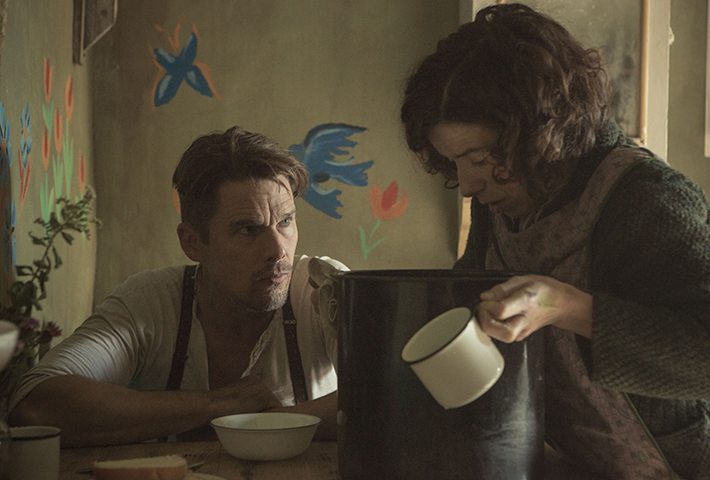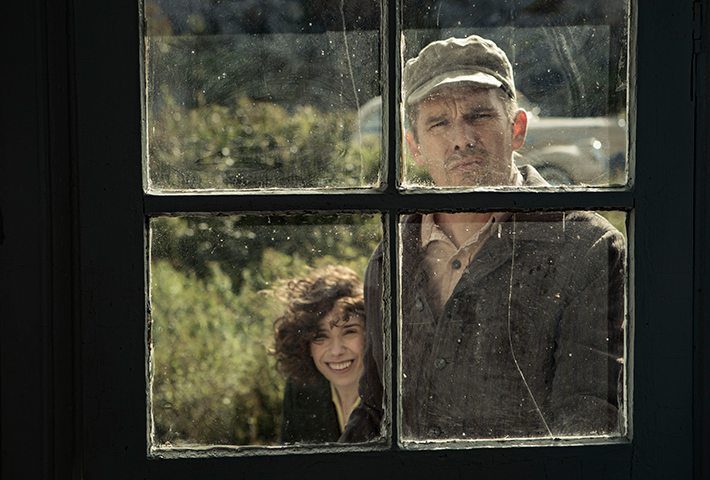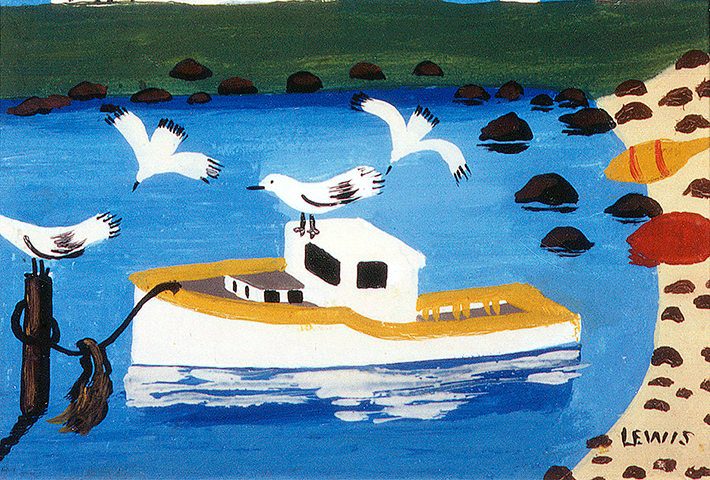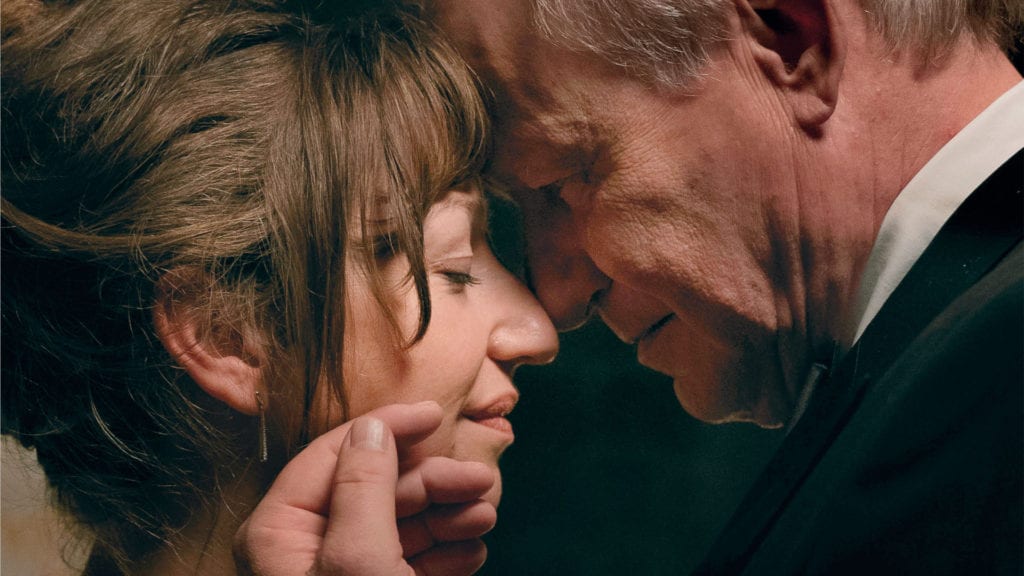?The whole of life, already framed, right there.?
It?s hard to assign Maudie to any one genre. Certainly it qualifies as biography. But it is also a bit of art history. It?s an inspirational story of finding success and happiness against terrible odds. And at its heart it is a love story?but not the kind of love story that usually is made into movies.
This is the story of Canadian primitivist artist Maud Dowley Lewis (Sally Hawkins). Suffering from severe arthritis since childhood, she is cared for by her overprotective and judgmental aunt. When mercurial fish peddler Everett Lewis (Ethan Hawke) seeks to hire a woman to clean his house and cook his meals, Maud sees it as a chance to escape. Everett lives an almost hermit-like existence. He had learned to be self-reliant to a fault. He lives in a 10?x12? house without water or electricity. When Maude moves in to such close quarters, it is hard for both of them to adjust. Everett is demanding and at times violent. He is taciturn, while Maud is opinionated and talkative. ?Early on he treats her as a lower life form (even the chickens outrank her), but she soon finds an important place in his life.
As an outlet, Maud begins painting pictures of birds and flowers on the walls?and soon the door and the windows. She paints on scraps of wood and paper. A woman from New York wants to buy some pictures, and soon Maud has a roadside business. While this enhances their finances, in many ways it rubs Everett the wrong way. It is a constant struggle to balance these two very independent souls whose lives have become intertwined and who find a love that many may find a bit cold, but there is a passion there.
The film?s greatest strength is the pair of performances by the lead actors. Even when there is little dialogue, their screen presence carries us through the story and the moods that are such a part of the film.
The film often makes use of windows?looking in or out through windows, conversations through windows, windows that might be so dirty we can barely see. For Maud, her art was the window through which she viewed the world. Her paintings are vibrant and happy?far happier than we might expect from someone who suffered so much both physically and emotionally. It is through the window of her art that Maud found happiness and validation.
The concept of validation is a key. How frequently we use the word invalid for someone with a physical or emotional problem. And how close we may come to thinking of such a person as not valid because of their affliction. That is certainly how Maud?s family treated her. She was deemed unimportant and a burden. Early in her relationship with Everett, he thought her incapable of doing what needed to be done. Yet when others began to see beauty in the pictures that she created, it was obvious that she mattered. It was not just that she was earning money. It was that she did something that brought joy to herself and others.
Maudie reminds us of the intrinsic value each person has. To treat them otherwise means we could well miss the gifts they offer to us.
Photos courtesy of Sony Pictures Classics







